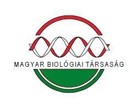A vörös áfonya (Vaccinium vitis-idaea L.) össz-antocianin tartalma néhány állományánál a Keleti-Kárpátokban
Absztrakt
A vörös áfonya (Vaccinium vitis-idaea L.) évszázadok óta használatos az erdélyi népgyógyászatban és hagyományos táplálkozásban, a néphit által egészségvédő hatással felruházott vadnövény. Beltartalmi összetevői tekintetében számos nem tápanyagként hasznosuló, ám az egészségre előnyös hatással bíró vegyületet ír le a nemzetközi szakirodalom. Célkitűzésként négy erdélyi: Maroshéviz, Gyergyó, Csík, Udvarhely tájegységből gyűjtött vörös áfonya minta össz-antocianin tartalmának spektrofotometriás meghatározását és összehasonlítását, ezek termőhelyi viszonyok által okozott változásának vizsgálatát fogalmaztuk meg. Az azonos körülmények között tárolt vörös áfonya termésminták össz-antocianin tartalma 166,49-324,52 mg/100g szárazanyag között változott és azokban az állományokban (Büdösfürdő, Bélbor) mértünk nagyobb mennyiséget (304,88 valamint 324,52 mg/100g szárazanyag), amelyek kevésbé zárt erdőkben voltak és több napfény érte őket a termés érése során.
Hivatkozások
Andersen O, M. 1985: Cromatographic Separation of Anthocyanins in Cowberry (Lingonberry) Vaccinium vitis idaea L. Journal of Food Science 50(5): 1230–1232. http://dx.doi.org/10.1111/j.1365-2621.1985.tb10449.x
Beke Ö. 1935: Népies növényneveink történetéhez. Vasi Szemle II: 256–264, 381–390.
Bishayee A., Haskell Y., Do C., Siveen K. S., Mohandas N., Sethi G., Stoner G. D. 2015: Potential benefits of edible berries in the management of aerodigestive and gastrointestinal tract cancers: preclinical and clinical evidence. Critical Reviews in Food Science and Nutrition (in press) http://dx.doi.org/10.1080/10408398.2014.982243
Burger O., Weiss E., Sharon N., Tabak M., Neeman I., Ofek I. 2002: Inhibition of Helicobacter pylori adhesion to human gastric mucus by a high-molecular-weight constituent of cranberry juice. Critical Reviews in Food Science and Nutrition 42(S3): 279–284. http://dx.doi.org/10.1080/10408390209351916
Butură V. 1979: Enciclopedie de etnobotanică românească. Editura Științifică și Enciclopedică. Bucuresti, p. 153.
Csedő K. 1980. Plantele medicinale si condimentare din judetul Harghita. Comitetul Executiv al Consiliului Popular al judetului Harghita. Miercurea Ciuc, pp. 619–620.
Duda-Chodak A., Tarko T., Rus M. 2009: Antioxidant activity of selected herbal plants. Herba Polonica 55(4): 65–77.
Füleki T., Francis F. J. 1968: Quantitative methods for anthocyanins. Food Science 33(3): 266–274. http://dx.doi.org/10.1111/j.1365-2621.1968.tb01365.x
Füzi I., Csedő K., Kisgyörgy Z., Rácz G. 1973: Plantele medicinale din județul Harghita. Intreprinderea Poligrafică Tîrgu Mures. Tîrgu Mures, p. 70.
Gülçin İ. 2006: Antioxidant activity of caffeic acid (3,4-dihydroxycinnamic acid). Toxicology 217(2): 213–220. http://dx.doi.org/10.1016/j.tox.2005.09.011
Häkkinen S. H., Karenlampi S. O. 2000: Influence of domestic processing and storage on flavanol contents in berries. Journal of Agricultural and Food Chemistry 48(7): 2960–2965. http://dx.doi.org/10.1021/jf991274c
Häkkinen S., Heinonen M., Kärenlampi S., Mykkänen H., Ruuskanen J., Törrönen R. 1999: Screening of selected flavonoids and phenolic acids in 19 berries. Food Research International 32(5): 345–353. http://dx.doi.org/10.1016/S0963-9969(99)00095-2
Heinonen M. 2007: Antioxidant activity and antimicrobial effect of berry phenolics – a Finnish perspective. Molecular Nutrition and Food Research 51(6): 684–691. http://dx.doi.org/10.1002/mnfr.200700006
Höhn M. 1996-97: Vascular flora of the Kelemen (Calimani) Mts. on side of the Maros (river) drainage area. Studia botanica hungarica 27–28: 75-108.
Höhn M. 1998: A Kelemen havasok növényzetéről. Menthor Kiadó. Marosvásárhely. p. 114.
Ikeda Y., Murakami A., Ohigashi H. 2008: Ursolic acid: an anti- and pro-inflammatory triterpenoid. Molecular Nutrition and Food Research 52(1): 26–42. http://dx.doi.org/10.1002/mnfr.200700389
Isaak C. K., Petkau J. C., Karin O., Debnath S. C., Siow Y. L. 2015: Manitoba lingonberry (Vaccinium vitis-idaea) bioactivities in ischemia-reperfusion injury. Journal of Agricultural and Food Chemistry 63(23): 5660–5669. http://dx.doi.org/10.1021/acs.jafc.5b00797
Jovancevic M., Balijagic J., Menkovic N., Savikin K., Zdunic G., Jankovic T., Dekic-Ivankovic M. 2011: Analysis of phenolic compounds in wild populations of bilberry (Vaccinium myrtillus L.) from Montenegro. Journal of Medicinal Plants Research 5(6): 910–914.
Kállay T-né, Ficzek G., Andor D., Stégerné Máté M., Boronkay G., Kirilla Z., Bujdosó G., Végvári Gy., Tóth M. 2010: Variety specific integrated fruit production development in order to optimize inner content value. International Journal of Horticultural Science 16(2): 27–31.
Kondo M., MacKinnon S. L., Craft C. C., Matchett M. D., Hurta R. A., Neto C. C. 2011: Ursolic acid and its esters: occurrence in cranberries and other Vaccinium fruit and effects on matrix metalloproteinase activity in DU145 prostate tumor cells. Journal of the Science of Food and Agriculture 91(5): 789–796. http://dx.doi.org/10.1002/jsfa.4330
Lee J., Finn C. E. 2012: Lingonberry (Vaccinium vitis-idaea L.) grown in the Pacific Northwest of North America: Anthocyanin and free amino acid composition. Journal of Functional Foods 4(1): 213–218. http://dx.doi.org/10.1016/j.jff.2011.10.007
Mane C., Loonis M., Juhel Ch., Dufour C., Malien-Aubert C. 2011: Food grade lingonberry extract: polymorphic composition and in vivo protective effect against oxidative stress. Journal of Agricultural and Food Chemistry 59(7): 3330–3339. http://dx.doi.org/10.1021/jf103965b
Neamtu G., Cîmpeanu Gh., Socaciu C. 1993: Biochimie vegetală (partea structurală). Editura Didactică si Pedagogică R. A. Bucuresti, pp. 309–345.
Nyárády E. Gy. 1929: A vizek és a vízben bővelkedő talajok növényzetéről a Hargitában. In: Csutak V. (szerk.) Emlékkönyv a Székely Nemzeti Múzeum ötvenéves jubileumára. Székely Nemzeti Múzeum Kiadása, Sepsiszentgyörgy, p. 596.
Oroian S. 2011: Botanică Farmaceutică. University Press Târgu Mureș. Târgu Mureș, p. 532.
Pálfalvi P. 2012. A Gyimesi- hágó környékének flóralistája. 2. rész. A Csíki Székely Múzeum Évkönyve VIII. Csíki Székely Múzeum, Csíkszereda, p. 375.
Péntek J., Szabó A. 1976. Ember és növényvilág. Kriterion Könyvkiadó, Bukarest, p. 46.
Pop E. 1960: Mlastinile de turbă din Republica Populară Romînă. Editura Academiei Republicii Populare Romîne. Bucuresti, p. 324.
Pop E., Sălăgeanu N. 1965. Monumente ale naturii din Romania. Editura Meridiane, Bucuresti, p. 99.
Puupponen‐Pimiä R., Nohynek L., Meier C., Kähkönen M., Heinonen M., Hopia A., Oksman‐Caldentey K. M. 2001: Antimicrobial properties of phenolic compounds from berries. Journal of Applied Microbiology 90(4): 494–507. http://dx.doi.org/10.1046/j.1365-2672.2001.01271.x
Rab J. 2001: Népi növényismeret a Gyergyói-Medencében. Pallas Akadémia Könyvkiadó, Csíkszereda, p. 181.
Rácz G., Csedő K. 1970: Plantele folosite în medicina populară de pe versanții vestici ai munților Harghita. Aluta, Sepsiszentgyörgyi Múzeum, p. 77.
Rapaics R. 1940: A Magyar gyümölcs. Magyar Természettudományi Társulat, Budapest, p. 17.
Ritchie I. C. 1955: Vaccinium vitis-idaea. Biological flora of the British Isles. Journal of Ecology 43(2): 701–708. http://dx.doi.org/10.2307/2257030
Roman I., Puică C., Toma V. A. 2014: The effect of Vaccinium vitis-idaea L. extract administration on kidney structure and function in alcohol intoxicated rats. Studia Universitatis “Vasile Goldiş”, Seria Ştiinţele Vieţii 24(4): 363–367.
Saario M., Koivusalo S., Laakso I. 2002: Allelopathic potential of lingonberry (Vaccinium vitis-idaea L.) litter for weed control. Biological Agriculture and Horticulture 20(1): 11–28. http://dx.doi.org/10.1080/01448765.2002.9754946
Soó R. 1944. A székelyföld növényszövetkezeteiről. Múzeumi Füzetek (Kolozsvár) 2(2): 12–59.
Stoner G. D., Wang L. S., Casto B. C. 2008: Laboratory and clinical studies of cancer chemoprevention by antioxidants in berries. Carcinogenesis 9: 1665–1674. http://dx.doi.org/10.1093/carcin/bgn142
Su Z. 2012: Anthocyanins and flavonoids of Vaccinium L. Pharmaceutical Crops 3(1): 7–37. http://dx.doi.org/10.2174/2210290601203010007
Viljakinen S., Visti A., Laakso S. 2002: Concentrations of organic acids and soluble sugars in juices from Nordic berries. Acta Agriculturae Scandinavica, Section B – Soil and Plant Science 52(2): 101-109. http://dx.doi.org/10.1080/090647102321089846
Vyas P., Curran N. H., Igamberdiev A., Debnath S. C. 2015: Antioxidant properties of lingonberry (Vaccinium vitis-idaea L.) leaves within a set of wild clones and cultivars. Canadian Journal of Plant Science 95(4): 663–669. http://dx.doi.org/10.4141/cjps-2014-400
Wang Y., Zhang D., Liu Y., Wang D., Liu J., Ji B. 2015. The protective effects of berry-derived anthocyanins against visible light-induced damage in human retinal pigment epithelial cells. Journal of the Science of Food and Agriculture 95(5): 936–944. http://dx.doi.org/10.1002/jsfa.6765
Yang B., Kortesniemi M. 2015: Clinical evidence on potential health benefits of berries. Current Opinion in Food Science 2: 36–42. http://dx.doi.org/10.1016/j.cofs.2015.01.002
Zheng W., Wang S. Y. 2003: Oxygen radical absorbing capacity of phenolics in blueberries, cranberries, chokeberries, and lingonberries. Journal of Agricultural and Food Chemistry 51(2): 502–509. http://dx.doi.org/10.1021/jf020728u
Zoratti L., Jaakola L., Haggman H., Giongo L. 2015: Anthocyanin profile in berries of wild and cultivated Vaccinium spp. along altitudinal gradients in the Alps. Journal of Agricultural and Food Chemistry 63(39): 8641–8650. http://dx.doi.org/10.1021/acs.jafc.5b02833


















